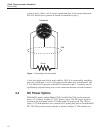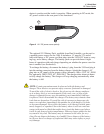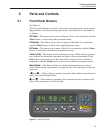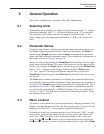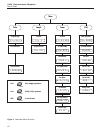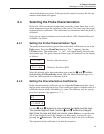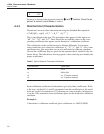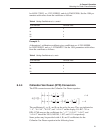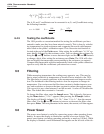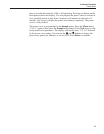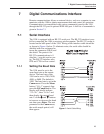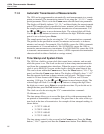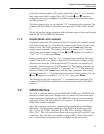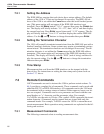
E -04
Increase or decrease the exponent using the U and D buttons. Once the ex
-
ponent is correct, press Enter to store it.
6.4.3 Steinhart-Hart Characterization
Thermistors are most often characterized using the Steinhart-Hart equation:
rTK expBBTBTBT
o
([])[] [ ]Ω= + + +
−−−
1
1
2
2
3
3
This is the default probe type. The parameters that appear for this option are
“b0”, “b1”, “b2”, and “b3”. These should be set with the values of the corre
-
sponding coefficients that appear on the thermistor’s calibration certificate.
The coefficients on the certificate may be labeled differently. For instance,
some certificates give values for coefficients “a”, “b”, “c”, and “d”. Also, some
certificates may give more than one set of coefficients for different equations.
Choose the coefficients that are given for the equation that is similar to the one
shown above. The table below showing typical values can help you identify the
proper coefficients.
Some calibration certificates for thermistors give only three coefficients. If this
is the case, set the b0, b1, and b3 parameters from the coefficients on the certif
-
icate and set the b2 parameter to 0. Following are some examples showing how
to set the 1504 parameters from coefficients given on the thermistor calibration
certificate.
Example 1:
A thermistor’s calibration certificate gives coefficients a=-4.6853436E00,
1504 Thermometer Readout
User’s Guide
20
1504 Coefficients Typical values
b0 -5 to -3
b1 3000 to 5000
b2 ±9 x 10
5
(positive exponent)
b3 ±9 x 10
7
(positive exponent)
Table 2 Typical Values for Thermistor Coefficients



